Additional notes (click to expand)
Medicinal
An infusion of the leaf has been used as a poultice for boils and abscesses. Burdock root is a remedy for the treatment of dry and scaly skin conditions such as psoriasis and eczema.
DeSwiet, Michael. (2012). Greater Burdock, Arctium lappa.
Culpeper: ‘Burdanae, etc. Of Bur, Clot-Bur or Burdock, ... helps such as spit blood and matter, bruised and mixed salt and applied to the place, helpeth the bitings of mad dogs. It expels wind, easeth pains of the teeth, strengthens the back, helps the running of the reins, and the whites in women, being taken inwardly.’
Culpeper, Nicholas. (1650). A Physical Directory . London, Peter Cole.
The roots contain inulin, which is made into a non-digestible sweetener for diabetics. It has a multitude of uses in herbal medicine, in particular it is a component of a compound called ‘essiac’ that has been widely used as a treatment of cancers in the USA, but which is of no proven benefit. The young roots can be eaten raw or cooked.
Oakeley, Dr. H. F. (2013). The Gardens of the Pharmacopoeia Londinensis.
Traditional Herbal Medicine Registration (THMR).
Nomenclature
Culpeper: ‘Burdanae, etc. Of Bur, Clot-Bur or Burdock,
Culpeper, Nicholas. (1650). A Physical Directory . London, Peter Cole.
Other use
Arctium lappa L. Asteraceae. Greater burdock. Distribution: Europe to India and Japan. Dioscorides (Beck, 2003) writes: '... helps those who spit blood nd who suffer from abscesses ... plastered on it stems the pains around the joints that stem from twistings. The Leaves are applied beneficially on old ulcers.' Culpeper (1650) writes: ‘Burdanae, etc. Of Bur, Clot-Bur or Burdock, ... helps such as spit blood and matter, bruised and mixed salt and applied to the place, helpeth the bitings of mad dogs. It expels wind, easeth pains of the teeth, strengthens the back, helps the running of the reins, and the whites in women, being taken inwardly.’
The roots contain inulin, which is made into a non-digestible sweetener for diabetics. It has a multitude of uses in herbal medicine, in particular it is a component of a compound called ‘essiac’ that has been widely used as a treatment of cancers in the USA, but which is of no proven benefit. The young roots can be eaten raw or cooked. The seeds are hairy and care should be taken when harvesting them as inhaled they are reported as ‘toxic’.
Oakeley, Dr. Henry F. (2013). Wellcome Library notes.
link
Indication: to increase urine to flush urinary tract infection/minor urinary complaints. From Patient information leaflet for preparations licensed as Traditional Herbal remedies in the UK.
Medicines and Health Care Regulatory Authority, 2013 Licensed Traditional Herbal Remedies
Toxicity
The seeds are hairy and care should be taken when harvesting them as inhaled they are reported as ‘toxic’.
Oakeley, Dr. H. F. (2013). The Gardens of the Pharmacopoeia Londinensis.
Side effects/precautions: Hypersensitivity; do not take with diuretics; may cause anaphylactic shock, mild gastrointestinal effects. From Patient information leaflet for preparations licensed as Traditional Herbal remedies in the UK.
Medicines and Health Care Regulatory Authority, 2013 Licensed Traditional Herbal Remedies
Geographical distribution
- Asia-Temperate, Caucasus, North Caucasus
- Asia-Temperate, Caucasus, Transcaucasus
- Asia-Temperate, China
- Asia-Temperate, Western Asia, Afghanistan
- Asia-Temperate, Western Asia, Cyprus
- Asia-Temperate, Western Asia, Iran
- Asia-Temperate, Western Asia, Iraq
- Asia-Tropical, Indian Subcontinent, India
- Asia-Tropical, Indian Subcontinent, Nepal
- Asia-Tropical, Indian Subcontinent, Pakistan
- Europe, Eastern Europe
- Europe, Middle Europe
- Europe, Northern Europe
- Europe, Northern Europe, Great Britain
- Europe, Northern Europe, Ireland
- Europe, Southeastern Europe
- Europe, Southwestern Europe
Arctium lappa L.
Family: ASTERACEAEGenus: Arctium
Species: lappa L.
Common names: Greater Burdock
Pharmacopoeia Londinensis name: Bardana
Distribution summary: Eurasia
Habit: Biennial
Hardiness: H5 - Hardy; cold winter
Habitat: Scrub and waste land
Garden status: Currently grown
Garden location: Pharmacopoeia Londinensis 1618 'Roots' (HSE 2), Plane tree bed (P)
Flowering months: July, August, September
Reason for growing: Medicinal, traditional herbal registration

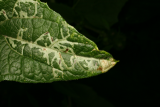
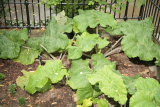
.JPG)
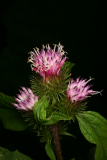
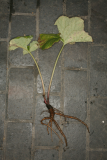
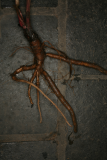
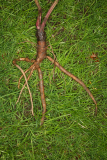

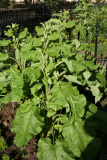
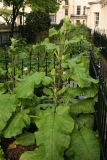

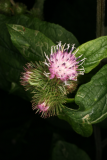
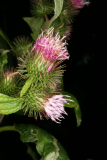
.JPG)